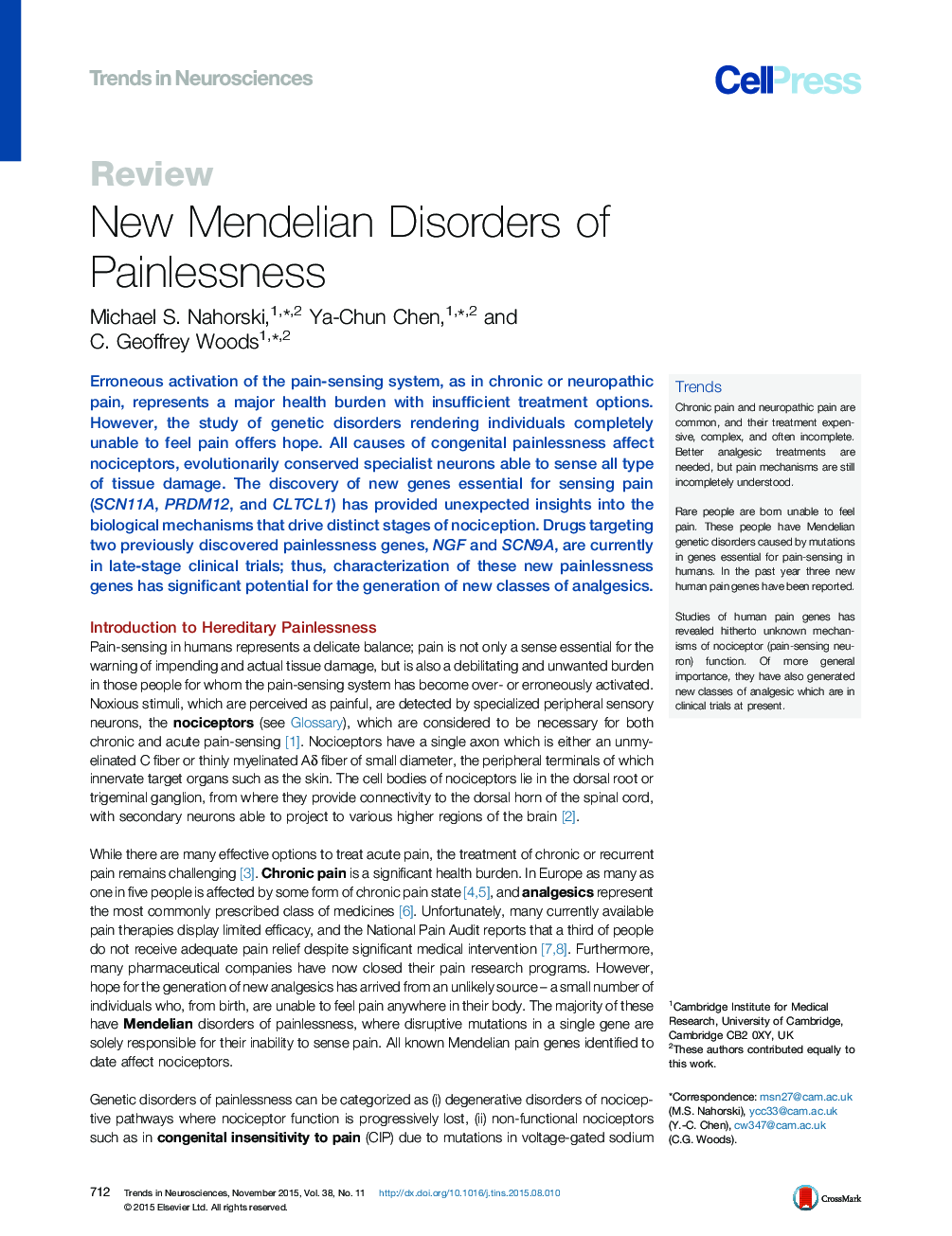| Article ID | Journal | Published Year | Pages | File Type |
|---|---|---|---|---|
| 4354247 | Trends in Neurosciences | 2015 | 13 Pages |
Erroneous activation of the pain-sensing system, as in chronic or neuropathic pain, represents a major health burden with insufficient treatment options. However, the study of genetic disorders rendering individuals completely unable to feel pain offers hope. All causes of congenital painlessness affect nociceptors, evolutionarily conserved specialist neurons able to sense all type of tissue damage. The discovery of new genes essential for sensing pain (SCN11A, PRDM12, and CLTCL1) has provided unexpected insights into the biological mechanisms that drive distinct stages of nociception. Drugs targeting two previously discovered painlessness genes, NGF and SCN9A, are currently in late-stage clinical trials; thus, characterization of these new painlessness genes has significant potential for the generation of new classes of analgesics.
TrendsChronic pain and neuropathic pain are common, and their treatment expensive, complex, and often incomplete. Better analgesic treatments are needed, but pain mechanisms are still incompletely understood.Rare people are born unable to feel pain. These people have Mendelian genetic disorders caused by mutations in genes essential for pain-sensing in humans. In the past year three new human pain genes have been reported.Studies of human pain genes has revealed hitherto unknown mechanisms of nociceptor (pain-sensing neuron) function. Of more general importance, they have also generated new classes of analgesic which are in clinical trials at present.
